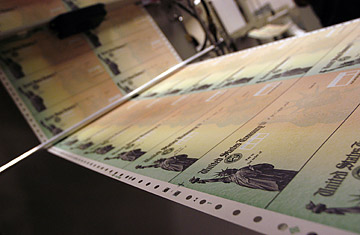
Washington doesn't agree on much these days, with one glaring exception: that the U.S. is facing a long-term fiscal crisis. The federal government's debt is now $13.8 trillion and is projected to hit $20 trillion by the end of the coming decade — when it will reach the highest level as a share of the economy that the U.S. has seen in 50 years. In September the International Monetary Fund warned that the U.S. is moving dangerously close to a point at which spooked markets will send interest rates on new borrowing to devastatingly high levels. As it is, the government is on course to spend $1 trillion per year by 2020 on interest alone — about a quarter of all federal spending. "We are accumulating debt burdens that will rival a third-world nation within 10 years," says David Walker, former chairman of the nonpartisan Congressional Budget Office. "Once you end up losing the confidence of the markets, things happen very suddenly and very dramatically. We've seen that in Greece, we've seen it in Ireland, and we must not see it happen in the United States."
On Dec. 1, the two chairmen of the National Commission on Fiscal Responsibility and Reform, which was created by President Obama to find ways to get out of this hole, released the conclusions of its work. Both left and right had plenty of complaints about the mixture of tax hikes and spending cuts proposed by former Clinton White House chief of staff Erskine Bowles and former Wyoming Republican Senator Alan Simpson, and it's not clear whether Congress will pay the plan any mind. But Bowles warned that inaction was not an option: "The deficit and debt is like a cancer," he said on Nov. 30. "And it's going to destroy our country from within."
The list of reasons for our looming economic disaster is long: a tax-cutting and spending spree when economic times were good; the financial crisis, with its blow to tax revenues and massive spending in response; two long wars in Iraq and Afghanistan. There are also plenty of ways we can get out of hock. Unfortunately, earmarks and the "waste, fraud and abuse" some politicians rail about barely make up the crust on the bread. The Bowles-Simpson plan has spotlighted some of our government's long-standing sacred cows — ones that may finally need a turn on the butcher's block. Here are three of the most expensive.
I. A Leaner Military Machine?
Even our generals agree that we need to balance our budget. "The most significant threat to our national security is our debt," Joint Chiefs of Staff Chairman Michael Mullen said in August. But Mullen wasn't calling for defense cuts to reduce the deficit. He was warning that the deficit could mean that cuts were coming whether the brass wanted them or not. That kind of thinking has kept the Pentagon virtually off-limits for more than a decade. Republicans believe that defense is government's core function and rarely challenge the military's spending wish lists. Democrats, for their part, have long run scared from charges that they are antimilitary, particularly since 9/11. "After 2001, nobody wanted to challenge the military on anything, and [Congress] didn't make the hard choices," says Lawrence Korb of the liberal Center for American Progress.
Choosing not to choose means the military power of the U.S. is unrivaled. Our defense budget now equals that of the rest of the world's nations combined. The Pentagon's $664 billion budget amounts to roughly $1 of every $5 the federal government spends. Adjusted for inflation, that's more than the U.S. has spent on defense at any time since World War II, including Ronald Reagan's aggressive Cold War arms buildup.
That might seem reasonable, given the demands of two costly wars abroad. But even if you don't count the price tags for Iraq and Afghanistan, the defense budget has grown 80% since 2000. Why? One reason is that spending has exploded for big weapons systems designed for enemies now gone (the Soviets) or unlikely to threaten us soon (China). "We're spending more and more, and we're not getting more for it," says Todd Harrison of the Center for Strategic and Budgetary Assessments.
But we are getting some extravagant weapons systems — systems that we don't really need. There's the Navy's new $600 million littoral combat ship (never mind that the U.S. already enjoys total supremacy at sea). Or the Marines' incoming fleet of amphibious landing vehicles, costing more than $13 billion, whose purpose even Defense Secretary Robert Gates has questioned. By contrast, the equipment it takes to fight terrorists is relatively cheap. A Predator drone, for instance, goes for about $10 million — pocket change compared with the price of big ships and planes.
Then there are more mundane expenses. Even members of Congress who are critical of military policies love to show their support for "the troops," and so for years Congress has approved generous pay raises and health care benefits for service members. One result is that some 2 million military retirees are enrolled in the Pentagon's Tricare health program, whose $460 annual premium is unheard of in the private sector — in part because Congress hasn't raised it since 1995.
